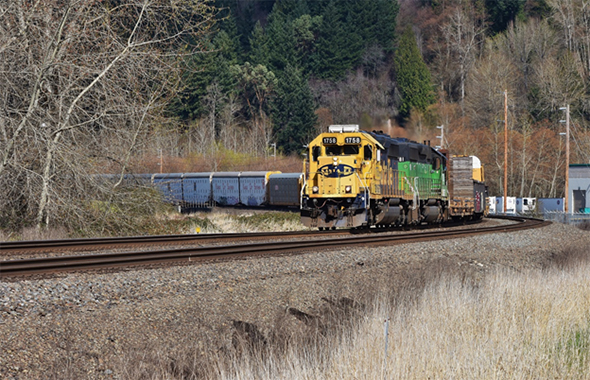
The FRA announced 4th Quarter 2017 PTC implementation progress on the nation’s railroads. BNSF Railway has announced its implementation is effectively completed, the first Class 1 railroad to do so. BNSF SD40-2 #1758 led a local train south in Sumner, Washington on March 25th, 2018. Photo © 3/2018 by Nikki Burgess; all rights reserved.
Spring has arrived—I hope it is starting to bloom in your hometown! Remember to be careful when getting those outdoor spaces back into service after their winter shutdown. It’s easy to injure muscles that may not have seen much use since last October! Regulatory activity this last week focused on the US government’s efforts to begin drafting policies related to automated vehicle operations in the commercial sector. See the latest below:
Chemical Hazard Board
The board will have its next public meeting on April 4th. This body helps investigate and make recommendations to reduce the incidence of chemical accidents in industry. See the meeting details here
FRA
- In a potential sign of things to come, the agency charged with railroad operating safety issued a request for information and comment on the looming introduction of fully-automated transport systems on the nation’s rail lines. How such technologies can be safely integrated into the logistics infrastructure and what impact it will have on the industry will doubtless prove a large issue in the coming years. Find out more here
- FRA also announced availability of its 4th Quarter 2017 PTC Implementation Progress report, as well as corresponding plans to more directly assist railroads to achive faster implementation. The current deadline to have operational systems in place is Decmber 31st, 2018, though a mechanism exists to request a further two year extension. The massive scope of the prject and the technical complexity of the interoperability issue among carriers has placed many railroads on a somewhat slowed compliance curve than was initially hoped. See the latest progress as well as assistance plans here
PHMSA
In action that closely mirrors that taken by the FRA and noted above, PHMSA has also issued a request for information dealing with pending introduction of fully-automated transport vehicles, with this agency’s interest focused more directly on what the consequences may be to regulated transport of dangerous goods. At present, many important functions of the hazmat transport equation like en route hazard communication and security of the lading have important contributions from the vehicle crew. How can those elements change to account for automated operation, or should they even do so? PHMSA is beginning the task of figuring that out. See how you can contribute here
FMCSA
Continuing the theme treated above, the agency is asking for comment on how its regulations may need to change to avoid hindering the development of automated driving systems for commercial vehicles. Interested in having your say? Here’s the way in
Labelmaster is a full service provider of products, shipping and training software, and professional consulting services to assist the DG and HS&E professional to comply with national and international regulations. See our full line of solutions at www.labelmaster.com


